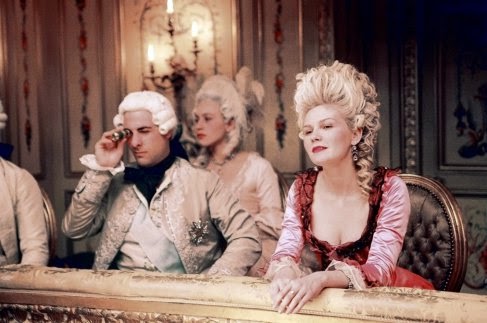New Monday, new week and a new feature. Welcome to our
first Back To Baroque column on Bella
& Millou. As I mentioned here, I wanted to create a blogspace that shared
my love for classical beauty and art so it seems fitting that I should dedicate
a whole column to a style of artistic aesthetic that so heavily influenced some
of my favourite artists of all genres and pre-dated the school of Neoclassicism
that underpins much of the classical art we see today.
When I think of Baroque, I think of the grand, opulent,
colourfully verdant paintings of Peter Paul Rubens. At the heart of Baroque is
the desire to create works of art that are poignantly dramatic, capturing the ‘live action’ of any moment in the human experience. What I’d like to write
about today though is Rococo. Let’s just say I’m more of a Rococo kind of girl.
Now, lest you think Rococo is an ode to frivolity of the
highest extravagance (insert Marie Antoinette reference here. I heart that
movie by the way), let me clarify. Yes, Rococo evolved in France and the rest of Europe as a reaction
to the serious drama that was prevalent in works created earlier in the 17th-18th
centuries. Yes, it probably brings to mind images of chubby angels, gold
everywhere and pastoral frivolity but
what I like the most about Rococo is its attention to playful enchantment and lighthearted
beauty.
Besides iconic moments in hair . . .
And the societal importance of skills in dance . . .
 |
| Portrait By Francoise Boucher |
Rococo softened the drama of Baroque into curvaceous form, brought
spontaneity and variety to the music of the day as evinced by composers such as
Bach and idealized beauty by adding a sense of childlike wonder.
Architecture remained heavily ornamental yet décor became
more personal and reliant on the need to showcase a comfortable space where
tete –a- tetes could be held more intimately and love letters written in flair
and style.
Perhaps the works of this era capture our imagination because of their inherent idealism. We find ourselves fascinated by the artistic attention given to creating beauty of a most heightened level simply as an end to itself. And if that doesn’t do it for you . . . well there are iconic moments in hair by Marie Antointette!















No comments:
Post a Comment
We love to hear from you, don't be shy! And come say hello on Instagram and Twitter @Bella_Millou